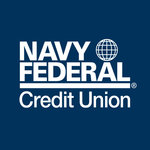The US military commitment to the Pacific was underlined in a White House meeting between the leaders of the US and Japan. But behind the scenes, this renewed focus on Asia has sparked a fierce debate within one of its most fabled military forces, writes defence analyst Jonathan Marcus.
A bitter family row has erupted in one of the US military's most hallowed institutions, the US Marine Corps.
A host of its former senior commanders are lining up to attack the current leadership over plans for its reinvention.
At issue is a plan to adapt the service for a potential conflict against China - a plan dubbed Force Design 2030. Almost from its inception this plan has been under attack with a cohort of retired generals taking the unusual approach of going to the press to air their frustrations.
Retired senior officers have been meeting regularly; speaking at seminars and think tanks; and devising their own alternative to a plan which they see as a disaster for the Marine Corps' future.
One prominent critic is the former US Navy Secretary and former Senator for Virginia, Jim Webb, who served as a Marine officer in the Vietnam War and ran for the Democratic presidential nomination in 2015.



 Marines
Marines China
China Japan
Japan



